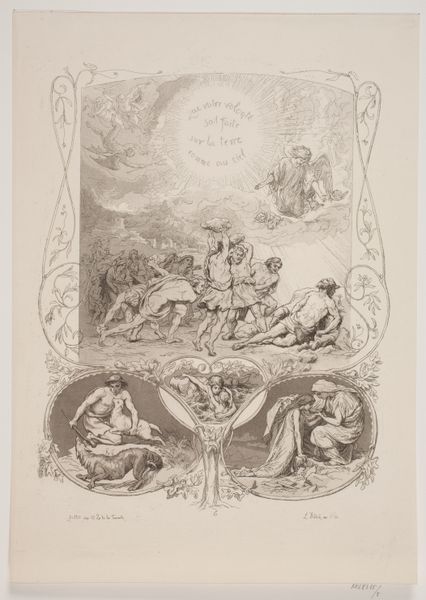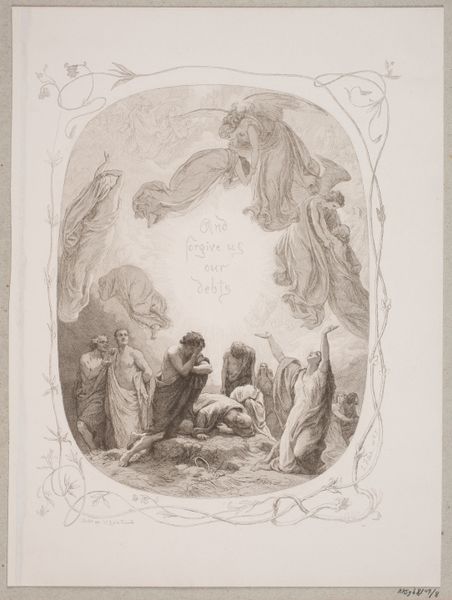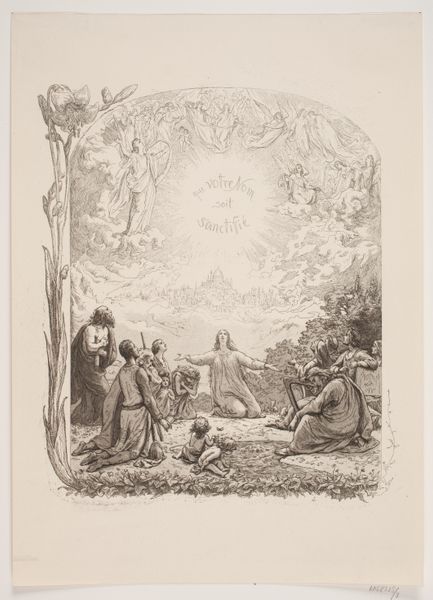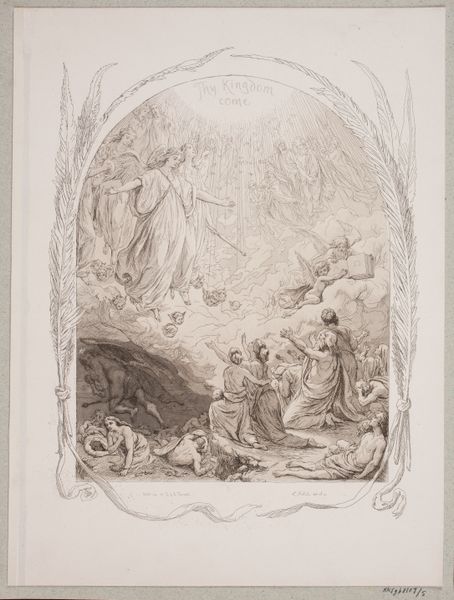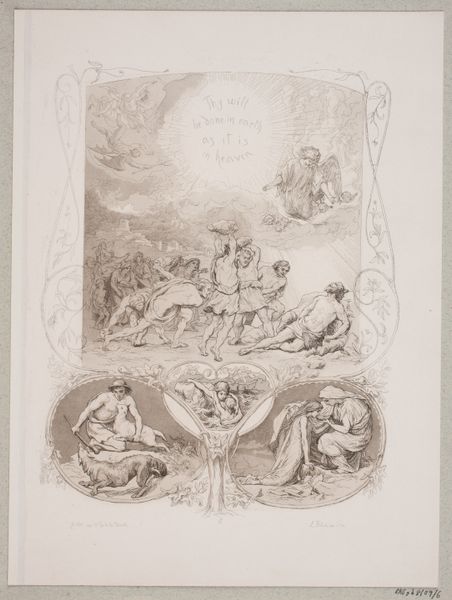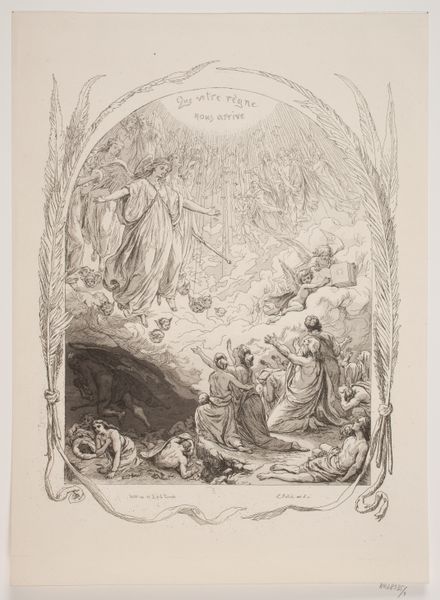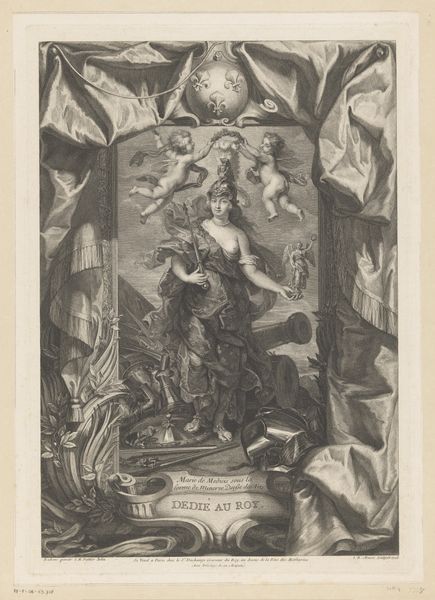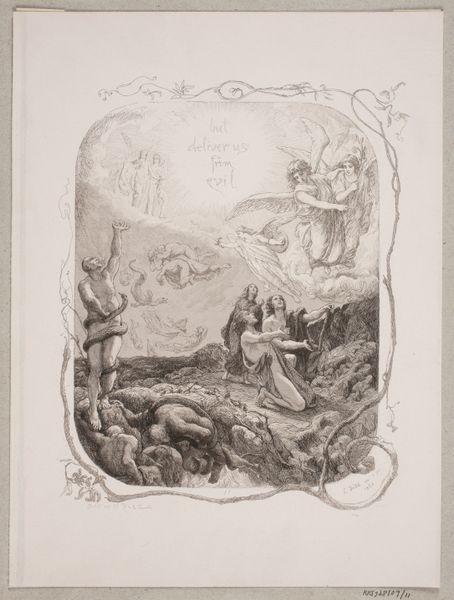
Dimensions: 306 mm (height) x 220 mm (width) (bladmaal)
Curator: This intricate print is titled "Illustration til 'L'Oraison Dominicale'," created by Lorenz Frølich in 1863. The medium here is ink and engraving. It’s quite beautiful, wouldn't you agree? Editor: My initial impression is one of ethereal melancholy, like a whispered prayer visualized. The monochromatic palette heightens the sense of reverie. Curator: Frølich, situated firmly within the Romantic tradition, was deeply influenced by national romanticism and his role as a history painter for the Danish court. This work reveals the period's penchant for blending the sacred and the allegorical, a characteristic response to emerging secular thought. Editor: I am particularly interested in the arrangement of figures; note how the figures cluster near the borders and lower portions, while the upper registers dissolve into luminous radiance. The composition really invites the viewer’s eyes up to read “Comme nous pardonnons a ceux qui nous ont offenses” Curator: The work, functioning as an illustration of the Lord’s Prayer, encapsulates key societal values from a mid-19th-century Christian perspective. The text emphasizes themes of forgiveness, resonating with Frølich's societal position, as court-supported art often had to subtly promote moral instruction to retain patronage. Editor: And let's consider Frølich's use of line here. The hatching and cross-hatching not only sculpt form, but also delineate planes of existence. Notice how he employs more densely layered lines to express the somber earthbound figures, juxtaposed against the ephemeral strokes illustrating celestial bodies. Curator: Indeed, Frølich captures a delicate balance; although serving political agendas, he conveys profoundly universal themes. This piece prompts reflection not only on religious values but also on art's dual role as societal reflector and influencer. Editor: Considering how Frølich orchestrates light and shadow—a subtle yet crucial contrast— allows one to understand the deeper structural oppositions at work between the material and immaterial. The symbolic use of dark and light gives one much to contemplate.
Comments
No comments
Be the first to comment and join the conversation on the ultimate creative platform.


